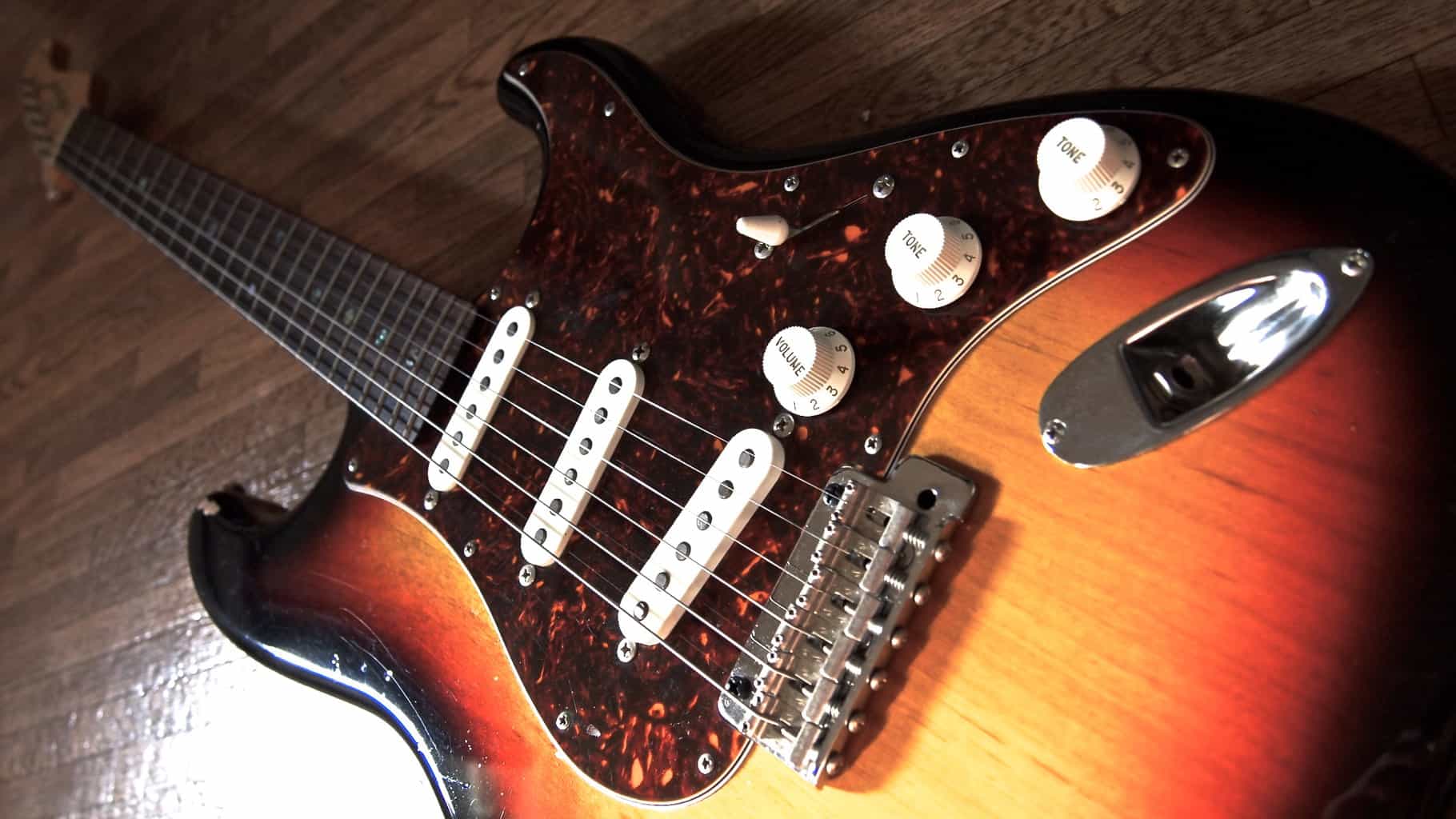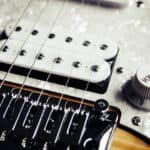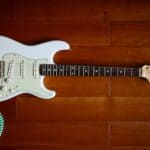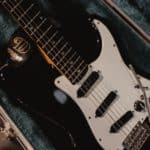Maybe you are looking for a new set of pickups to upgrade your strat, or perhaps you have some lying around from a mod on another guitar.
The thing is, strat middle pickups are hard to come by online. At least when not buying a complete set.
But why is this?
Well, the answer at this point, given the title of this article is pretty obvious:
Neck and middle strat pickups are the same, with the exception of modern instruments where the middle pickup is reversely wound to allow for hum canceling in the 2nd and 4th pickup switch positions. Originally, all 3 pickups were the same, but due to player preference, bridge pickups are now hotter.
In this article, I will dive deeper into this topic. I will first start talking about the origins of the strat and its pickup configuration.
After that, I will discuss the reasoning behind using the same pickup for both the neck and middle positions, and a common alternative builders use nowadays.
You will also learn about bridge pickups, and if it’s possible to differentiate each one in a set.
Are you ready to get started?
Let’s go!
A brief history on strat pickups
In the early days, Leo Fender ran a small workshop where guitars were made like furniture.
Sorry for deromanticizing it, but it’s the cold truth.
Whatever spec we vintage lover purists die for now, back then was just defined simply upon pragmatism and availability.
Pickups were no exception. Of course, there was research, design, and development involved, but after all, what defined the tone of the last 70 years was down to the materials and construction techniques available in California back then.
And with simplicity being the concept, or perhaps because of not knowing best, at first all 3 strat pickups were the same.
With time, players started breeding a preference for higher output bridge pickups. This might have been because neck pickups have a tendency of sounding naturally louder because of being placed near to where the strings vibrate the most.
This is now the norm, and it’s what you would expect in any pickup set nowadays.
Why neck and middle strat pickups are the same?
A silly but effective answer to this question is because they don’t really need to be physically different.
You see, the difference in position is enough to give the player a different sound to choose from.
I can imagine that having the neck and middle pickup be exactly the same, in the early days, just facilitated production by reducing variation across the line.
But again, with time, a slight variation emerged…
A common difference between neck and middle strat pickups
In modern instruments, it’s standard to have the middle pickup wound in reverse polarity.
This simple trick allows the player to have access to hum-canceling pickup blends in the 2nd and 4th position of a 5-way switch.
It’s wrong to affirm, then that middle and neck pickups are exactly the same.
Materials and design are, but the construction has this slight difference.
And if you were wondering about it, no, the reverse-wound has no effect on its tone. It’s done only for the aforementioned purpose.
These kinds of pickups are usually labeled as RW (reverse wound) or RP (reverse polarity) and will probably be marketed as neck pickups when sold individually.
Why bridge pickups usually are different from the others?
As I mentioned earlier, many years ago, player preference shifted towards hotter bridge pickups.
Most probably as a way to match the naturally higher output of the neck pickup.
Also, the opposite physical phenomenon occurs near the bridge. Here the vibration of the strings is less intense.
A hotter bridge pickup not only compensates for volume but also brings up the midrange a bit to correct for the trebly inherent “twangyness” of how the strings sound near the bridge.
Can you switch the positions of your strat pickups?
Well, you can do whatever you like with your guitar, I’m not here to judge.
But if you want an opinion about if you SHOULD do it, I think probably not.
You see, the simpler design survived for decades because it just works.
Let’s think about possible alternatives:
You switch the middle and neck pickups: Congrats, you get the same sound, but now your middle and bridge pickups have the same polarity, so you lose hum canceling in the 2nd position.
You switch the middle and bridge pickups: You now get a weaker, more trebly, and quieter bridge tone, a louder and more mid-present middle pickup, and lose the hum canceling in the 4th position.
You switch the neck and bridge pickups: You get an extremely hot neck position, with a really weak bridge tone. It will probably sound like 2 different guitars when you switch between these positions. You retain the hum-canceling benefits since you left the reverse polarity pickup untouched.
How to tell the difference between strat pickups from a set?
Here’s a great video about how to differentiate strat pickups from a set if you mixed them up:
The idea behind it is that if you have an RW/RP middle pickup, it will attract both the bridge and the neck pickups if you put them face to face.
The bridge pickup will have the shortest cabling of them all since it’s closer to the controls.
Finally, if you test them with an ohm meter, the readings will go higher as you move towards the bridge.
More ohms means higher output.

Hello there, my name is Ramiro and I’ve been playing guitar for almost 20 years. I’m obsessed with everything gear-related and I thought it might be worth sharing it. From guitars, pedals, amps, and synths to studio gear and production tips, I hope you find what I post here useful, and I’ll try my best to keep it entertaining also.





